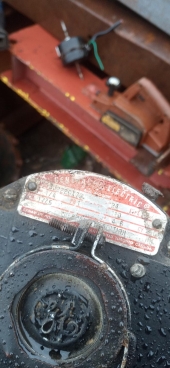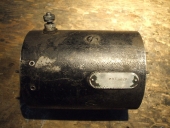In my
first post in Electricity for Permies I dismantled an old broken coffee maker. For some reason I didn’t post any photos of the motor I pulled out. For me it’s the most exciting part of a dissection, because it’s the heart of lots of tools and appliances.
I’ve wanted to take apart a motor for a little while now, and tonight I decided to subject the poor coffeemaker motor to some surgery. Enjoy the process and the photos.
Here is the motor all put together. You can see that it passed quality control. Good to know!

Here is one with the grinder blade up front. The blades used to smash coffee beans into coffee grounds.
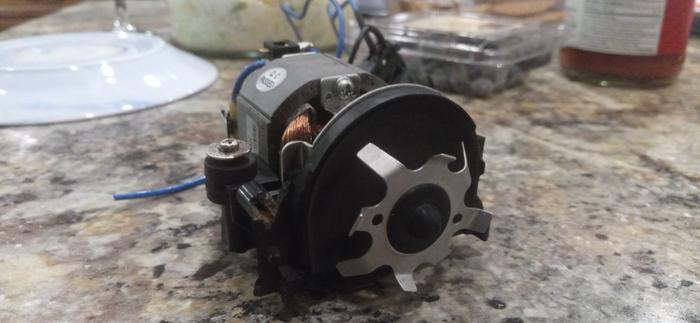
To start, I want to show you just how an electric motor can also be a generator. Mike mentioned this in my AC motors post. Here’s how things work. If you want to spin the motor using electricity, you plug the motor in and the voltage applied will make the motor spin…Now if you take the shaft of the motor and spin it manually, what do you think will happen? A voltage will be generated by the motor! If you’ve got a big enough motor spinning fast enough and you touch the leads to your tongue you might even feel a little tingle. Side note: if you wonder why I mention licking electrical stuff so often, it’s because it’s what I did before I owned a multimeter. I actually got pretty good at estimating DC voltages based on the tingle they gave my tongue. I once put my tongue on the leads of a solar car battery charger that gave out 21 volts…ouch! My tongue hasn’t forgiven me yet I don’t think.
So check out this video. I have my drill set up so it spins the shaft of the motor. Then I have my two leads from my multimeter attached to the motor leads, and the multimeter is set to measure voltage, but very low levels of it. Watch what happens when the motor is spun by the drill!
Isn’t that neat? If you scale this up, you can picture how generators at the huge power generation facilities work. Mind you those are generally generating alternating current rather than direct current, but the principle of spinning a motor very fast to generate an electric current is the same. At the end of the video I switched directions, but the leads disconnected. What you would have seen is a voltage generated again, but this time a negative one. Direct current electricity flows in only one direction, and it has both a positive and a negative side.
Here is another photo of the motor, this time with the blades removed. All I had to do was use my needle nose pliers to pull the pin out holding the blades on, and off they came.
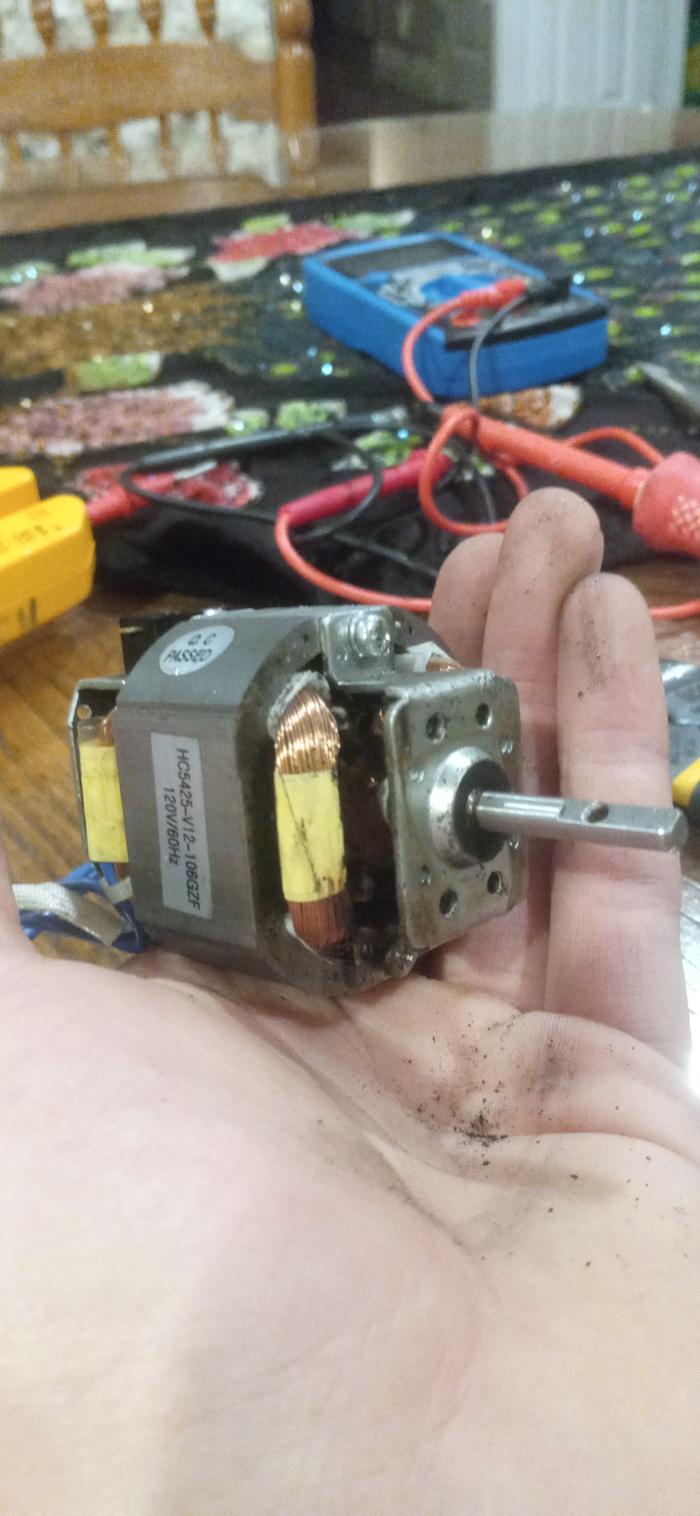
I pulled a couple more screws out, and voila! This is the heart of the motor. At the bottom is the commutator. This is where the voltage is applied by the brushes to spin the motor. In the centre we have the armature, inside of which are many tight coils of copper wire. It is called the rotor because it spins when the motor is running.
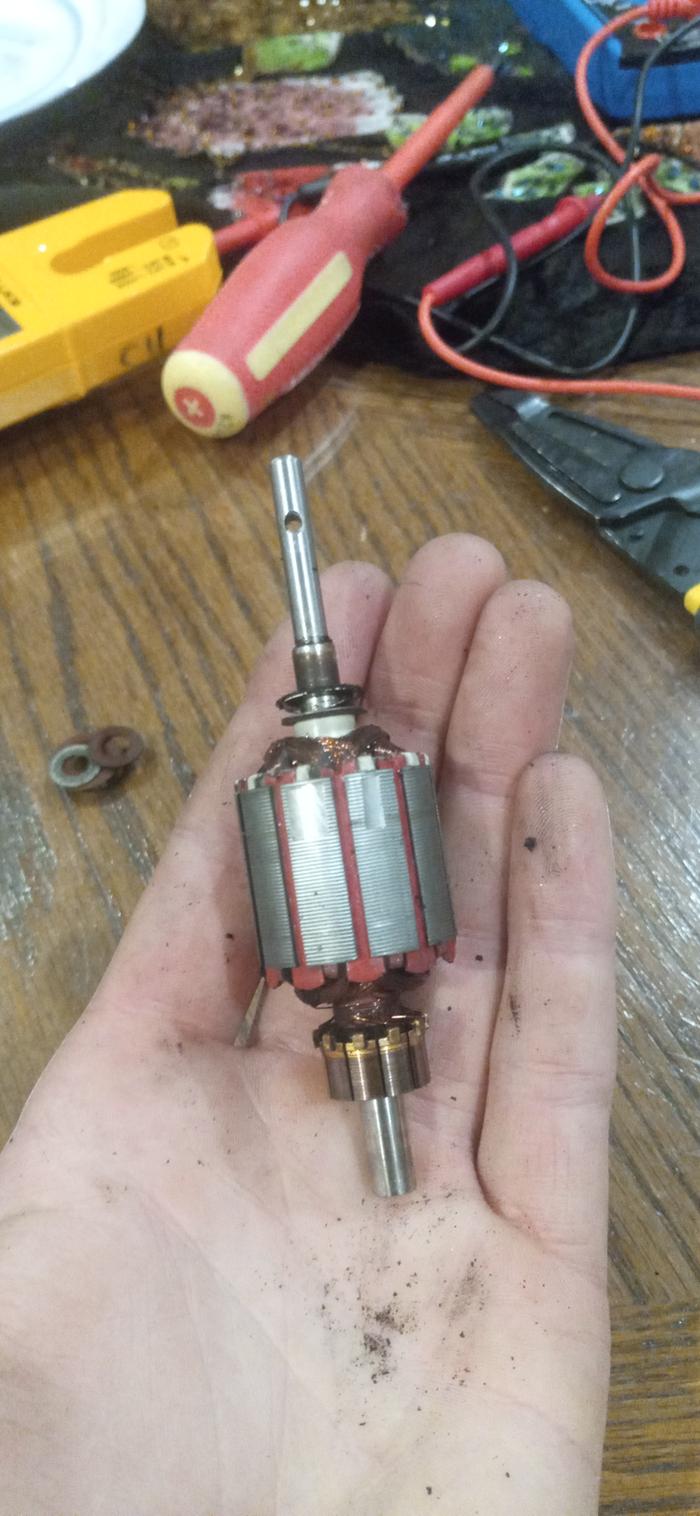
Here is the outside of the motor. It consists of a permanent magnet, positive and negative leads, and some more coils of copper wire. Altogether this forms the stator of a DC motor, and it is called that because it doesn’t move during operation.
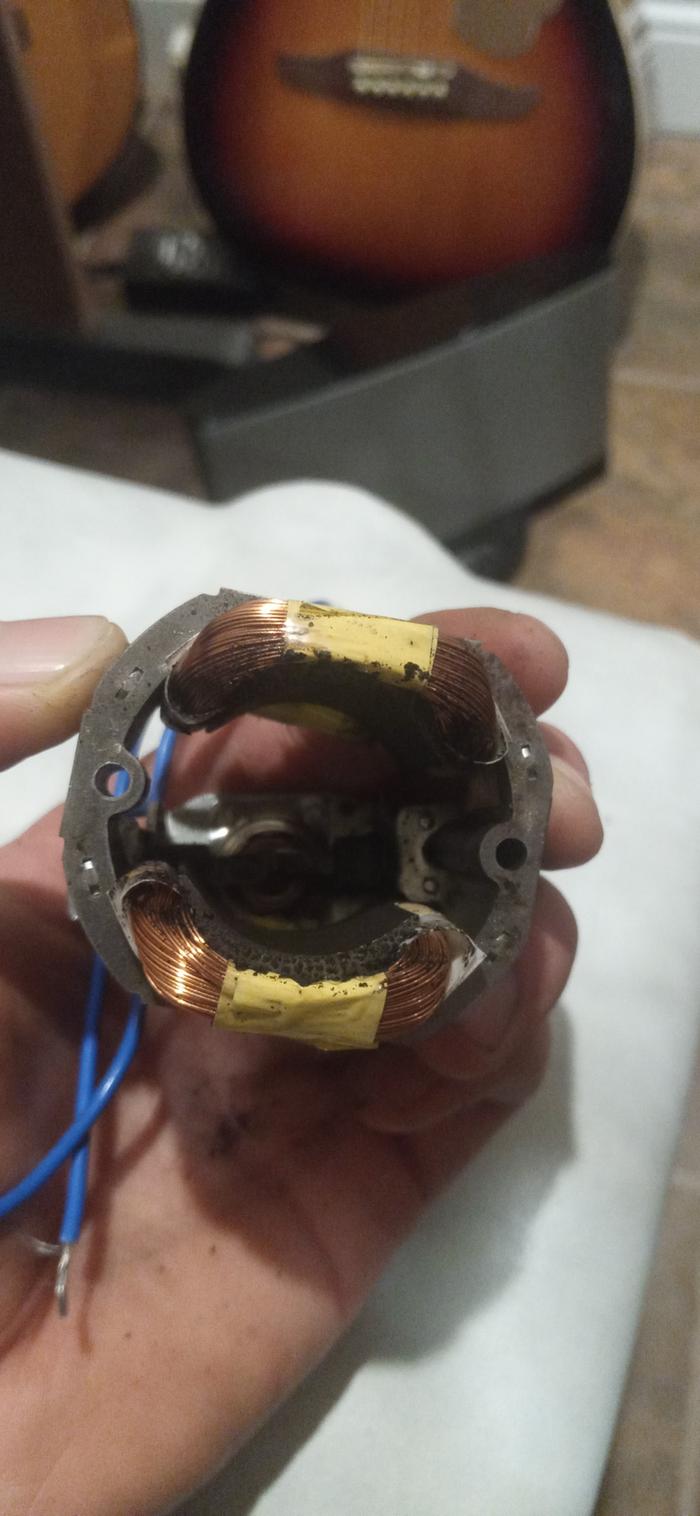
Here is an up close pic of the brushes. Electricity flows through the negative brush, through the commutator, then through one of the coils of copper and out through the positive brush. The brushes have springs behind them to ensure that they are always in contact with the commutator. These are most often what wears out in a DC motor, because they are always experiencing friction when the motor is running. Thankfully they are cheap, and usually easy enough to replace.
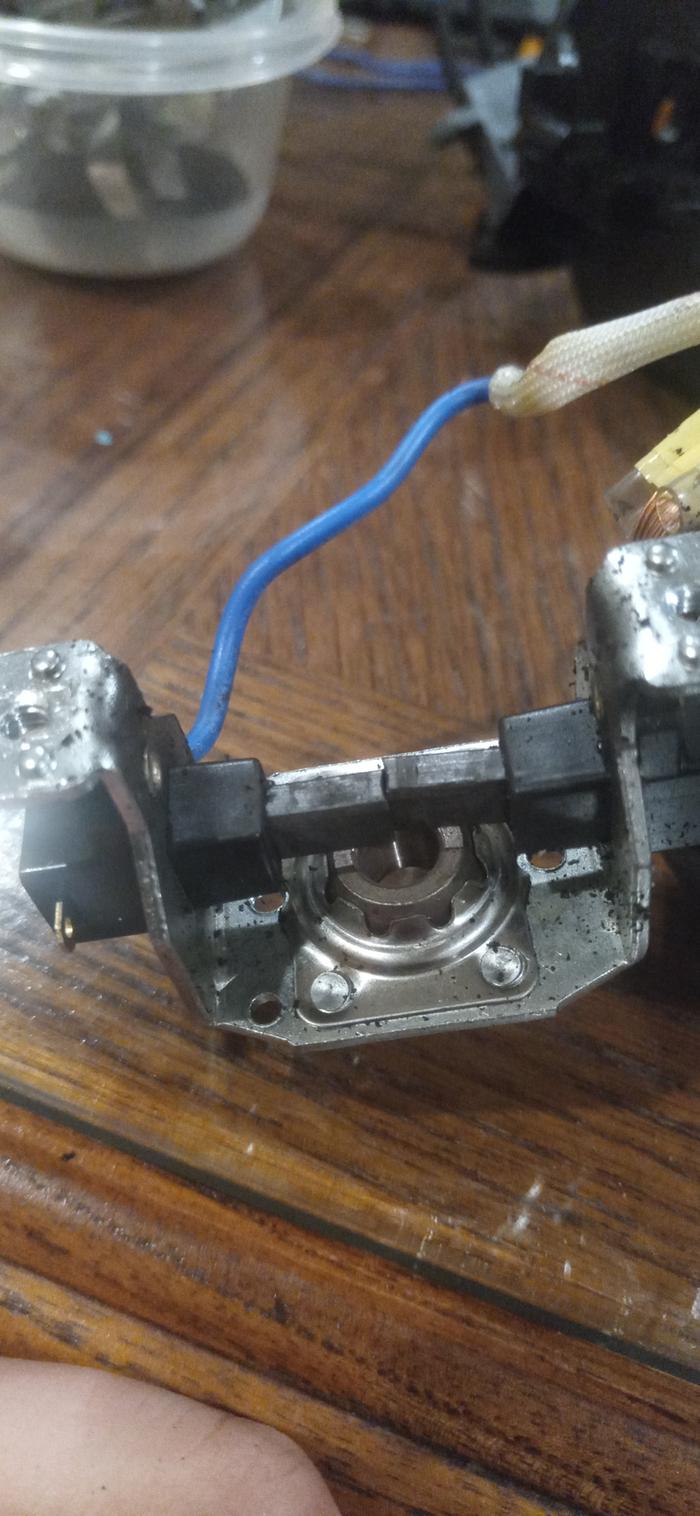
Finally, here is a big spread. We’ve got all the essential parts here.
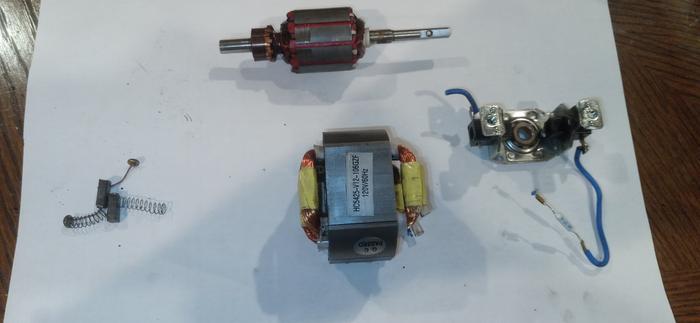
Now I could try and use words to explain how a DC motor works, but this guy did a better job than I could ever do. He starts at the very basics and uses beautiful animations to get the point across. Wow, do I ever love Youtube.
This is the fourth post in my Electricity for Permies series. As always I am open to hear what you want to learn about. Or if I messed up, let me know. I think I will dissect an AC motor next so we can see the difference between the two. If you’re too excited and can’t wait, have a gander at
this page.



